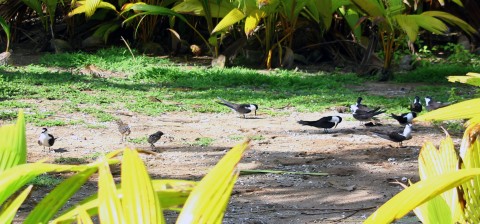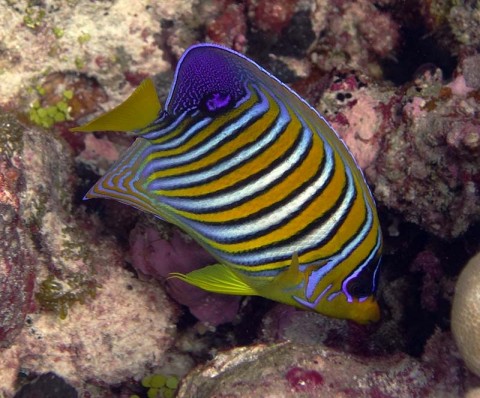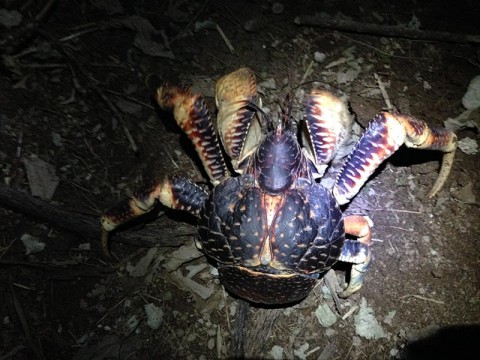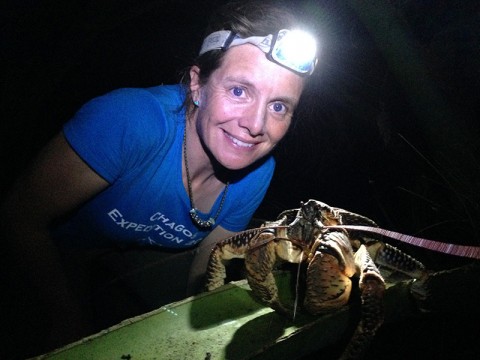BIOT Science Expedition 2014 - Rest Day? Day 14
Rest day?
24 hours without diving. Opportunity for a rest? Not likely when there is data entry, expedition equipment maintenance and terrestrial work to be done. Let’s not bore you with the former two that every scientist and expeditioner will be familiar with and go straight for the ground based efforts.

The scene on shore was reminiscent of Jurassic Park with giant beasts pursuing tiny squeaking prey through the tropical undergrowth. On this occasion the tiny squealers were Sooty Tern chicks and our researchers took the part of T-Rex on the prowl as they raced around to gather the small birds for ringing. Pete has penned a few words on the purpose of this effort.
“Today we woke to gentle rolling and the sound of seabirds overhead, we were anchored off rat-free islands. On taking my morning tea to the back deck, overhead were some 500 frigate-birds, using the heat from the ship’s stack as a thermal to rise high in to the blue skies.

It was a rest morning for the divers and the opportunity was taken to take a large team ashore and, hopefully, ring a host of Sooty Tern chicks in this new area. This is another island cluster where it is believed the Sooty Tern alternate which island they nest on. Ringing the flightless chicks with a unique serial numbered ring on one island and catching them again as adults, should prove if these birds do indeed switch breeding islands. With minimum training the marine scientists soon picked up how to handle chicks and record bird-style data.

Sadly, the expected Sooty Terns were not on this island in the numbers expected. There were some young chicks on the island so it was decided, as per the previous island that held terns, we would take a closer look at these chicks. Our worst fears were met when we found that these chicks were tick-infested too.

It appears that the Sooty Tern peak breeding period in the Chagos in 2014 has been catastrophically impacted throughout all atolls by parasitic tick infestations. Only long-term monitoring and scientific research will reveal if this event happens periodically (likely) or, the Chagos Sooty Terns are in terminal decline (hopefully not likely).”

By lunch time our 24 hours out of the water were up and some returned for a beautiful Oceanside dive off the atoll rim. This differed from previous dive sites in having a steady plateau at ten meters that shelved a long way out toward the west before dropping down a steep sandy bank to 20 meters that then shelved off once again and gradually descended to the darkness as a sandy slope. The coral gardens on the uppermost plateau contrasted markedly with the sand. Fortunate for me the scientist I was paired with required a data set just under 10 meters so I explored the gardens with my camera and shot some stills like this pic of a Regal Angelfish.

The days activities did not end there though. Now anchored alongside a fresh island we went ashore for the dark hours to measure coconut crab numbers again.

This time there were large adult crabs aplenty to count. On some occasions the scenes of the morning seemed reversed as these giant arthropods turned their fearsome claws on the scientists trying to measure them. Cue the advance of primitive armoured beasts and retreat of squealing scientists.

Pleasing to see how healthy the crab populations can be under the right conditions. The Chagos provides just the right combination to be a great haven for these giant characters of the crab world.

